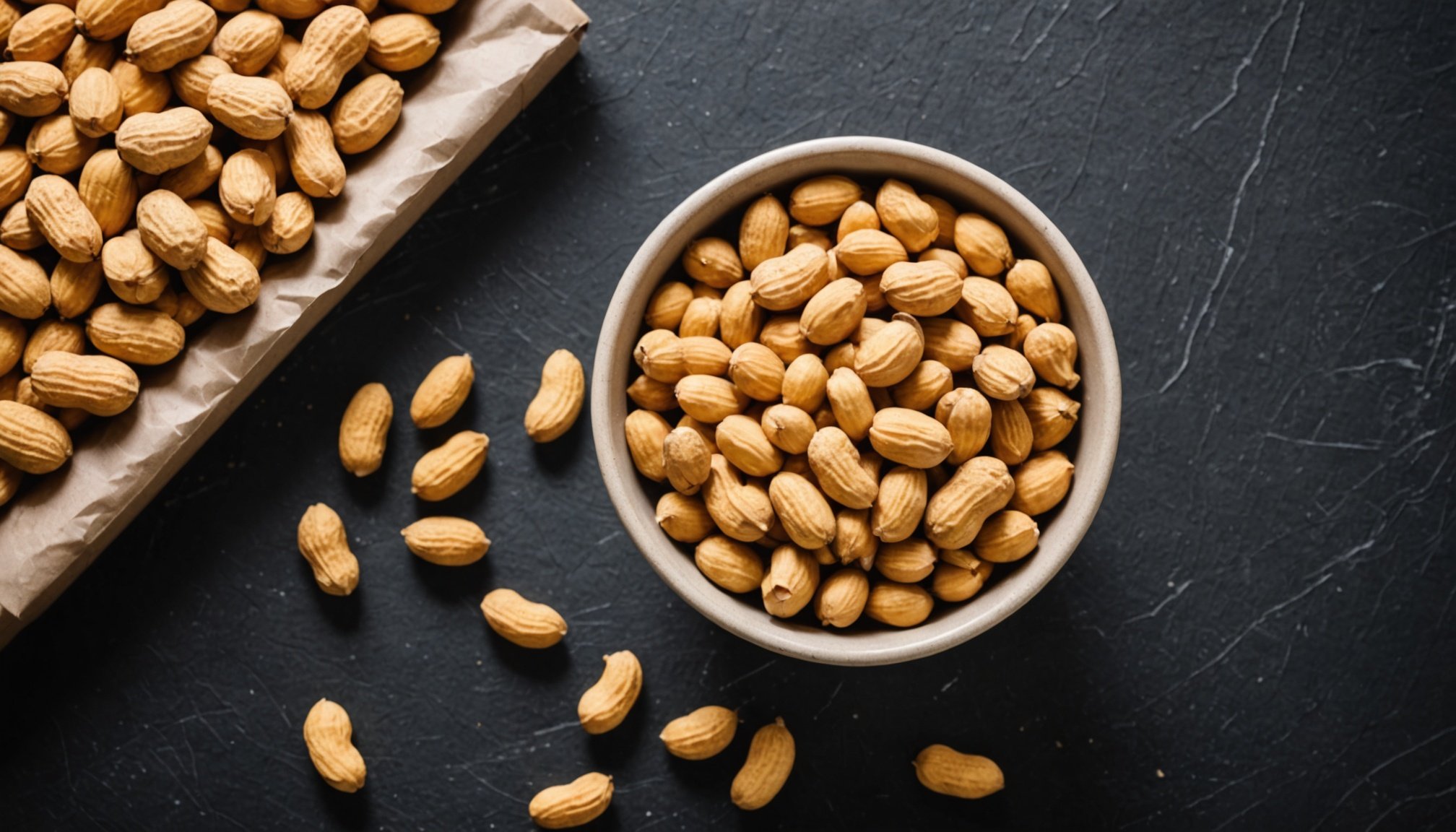Latest Advances in Peanut Allergy Prevention for Infants at High Risk
Understanding the Risks and New Guidelines
Peanut allergies are among the most common and severe food allergies, and their prevalence has been on the rise. For infants, especially those at high risk, the introduction of peanuts can be a critical step in preventing the development of a peanut allergy. The American Academy of Pediatrics (AAP) and other health organizations have issued guidelines to help parents navigate this process.
Infants Without Eczema or Food Allergies
For infants without a history of eczema or food allergies, the AAP recommends introducing peanut-containing foods along with other solid foods starting at 4-6 months of age. This recommendation is based on evidence suggesting that early introduction of allergenic foods can help prevent the development of food allergies.
Also to discover : Revolutionizing Mobility: Discover the Cutting-Edge Advancements in Upper Limb Robotic Prosthetics for Amputees
Here are some key points to consider when introducing peanuts to these infants:
- Timing: Start introducing peanut-containing foods at 4-6 months of age.
- Health Status: Ensure the infant is well and not suffering from any illness at the time of introduction.
- Observation: Be available to observe the infant for a few hours after the introduction.
- Preparation: Mix 1-2 teaspoons of peanut butter with 2-3 teaspoons of water to thin it out, and offer a small serving (e.g., the tip of a teaspoon) initially.
- Safety: Avoid giving whole peanuts or thick lumps of peanut butter due to the risk of choking.
Infants with Eczema or Egg Allergy
For infants with severe eczema, egg allergy, or both, the approach is more cautious. Recent guidelines from the National Institute of Health recommend that these infants undergo a food allergy evaluation by an allergist before introducing peanuts at home. Based on the test results, peanut-containing foods may be introduced at 4-6 months of age under medical supervision.
Also to read : Effective Strategies to Overcome Needle Fear in Children During Vaccination
The Impact of Air Pollution on Peanut Allergy Development
A recent study published in The Journal of Allergy and Clinical Immunology: In Practice has shed light on an unexpected factor that could influence the development of peanut allergies: air pollution. The research, led by the Murdoch Children’s Research Institute (MCRI) and the University of Melbourne, found that exposure to higher levels of air pollution from infancy is associated with an increased risk of developing a peanut allergy that persists throughout childhood.
Key Findings
- Association with Air Pollution: Higher levels of fine particulate matter (PM 2.5) and nitrogen dioxide (NO 2) were linked to an increased risk of peanut allergy.
- Specificity to Peanut Allergy: Unlike eczema and egg allergy, peanut allergy showed a significant association with air pollution.
- Long-term Impact: The study followed children up to 10 years and found that the allergy often persisted.
Associate Professor Rachel Peters from MCRI emphasized, “The rise in allergy prevalence has occurred at a similar time to increased urbanization, leading to the belief that environmental factors may be contributing to high allergy rates.” This study highlights the importance of early-life interventions aimed at reducing exposure to air pollution to potentially prevent peanut allergies.
Advanced Research and Funding
The quest to understand and prevent peanut allergies is ongoing, with significant research efforts and funding dedicated to this cause.
National Peanut Board Grants
The National Peanut Board has recently awarded $400,000 in grants to nine organizations to advance food allergy research and drive toward the eradication of peanut allergies. These grants support a variety of research projects, including studies on the immune mechanisms behind peanut allergies and the development of new treatments.
Clinical Trials and Innovations
Clinical trials have demonstrated the effectiveness of strategic, timed introduction of allergenic foods in preventing food allergies. For example, products like Lil Mixins, which are designed to introduce small amounts of peanut protein to infants, are being studied in clinical trials to assess their efficacy in allergy prevention.
Here is a detailed list of some current research areas and their focus:
- Whole Blood Transcriptomics: Studies are using whole blood transcriptomics to identify differences in innate immune pathway expression between infants with peanut allergy and those who are peanut-tolerant.
- Oral Immunotherapy: Research is ongoing to develop and refine oral immunotherapy protocols to treat existing peanut allergies.
- Environmental Factors: Investigations into how environmental factors, such as air pollution, contribute to the development of peanut allergies.
Practical Advice for Parents
For parents of infants at high risk of developing a peanut allergy, here are some practical steps and considerations:
Consult a Healthcare Provider
Before introducing any new foods, especially allergenic ones like peanuts, consult with your healthcare provider. This is particularly important for infants with eczema or other allergies.
Follow Introduction Guidelines
- Start Early: Introduce peanut-containing foods at 4-6 months of age.
- Monitor Health: Ensure the infant is well and observe them for any signs of an allergic reaction after introduction.
- Prepare Safely: Mix peanut butter with water to avoid choking hazards.
Be Aware of Environmental Factors
- Air Quality: Be mindful of the air quality in your area and take steps to minimize exposure to pollutants.
- Urban Planning: Support policies and initiatives aimed at improving air quality in your community.
Real-Life Implications and Stories
For families living with peanut allergies, the daily challenges are real and significant. Here is a story that illustrates the impact:
Mae, an 8-year-old girl, was diagnosed with peanut, dairy, and egg allergies at just 8 months old. Her mother, Eleanor Jenkin, recounts the severe anaphylaxis episode Mae experienced during a food challenge: “She was eating cupcakes as part of the challenge until she started to refuse to eat anymore. We thought she was just being fussy, but she began vomiting and lost consciousness. It was her first anaphylaxis and while it was scary, she returned to her normal self a few minutes after being given an adrenaline shot.”
Eleanor emphasizes the constant vigilance required: “Her allergies are always going to be in the back of her mind, influencing the decisions that she makes every time she eats at a restaurant, orders takeaway, or goes to a birthday party. As a family, we are learning to manage this new normal as best we can.” and Future Directions
The prevention of peanut allergies in infants at high risk is a multifaceted issue that involves early introduction of allergenic foods, awareness of environmental factors like air pollution, and ongoing research into the immune mechanisms and treatments.
Here is a comparative table summarizing the key points:
| Category | Details |
|---|---|
| Introduction Timing | 4-6 months of age for infants without eczema or food allergies; medical evaluation required for those with eczema or egg allergy |
| Preparation | Mix 1-2 teaspoons of peanut butter with 2-3 teaspoons of water to avoid choking hazards |
| Air Pollution Impact | Higher levels of PM 2.5 and NO 2 linked to increased risk of peanut allergy persistence |
| Research Funding | National Peanut Board grants support various research projects, including immune mechanisms and new treatments |
| Clinical Innovations | Clinical trials on timed introduction of allergenic foods and oral immunotherapy protocols |
| Environmental Awareness | Support policies to improve air quality to reduce peanut allergy risk |
As Associate Professor Rachel Peters noted, “The research highlights the importance of early-life interventions aimed at reducing exposure to air pollution, which could potentially prevent peanut allergies and other poor child health outcomes.”
By staying informed about the latest advances and guidelines, parents can take proactive steps to protect their infants from the risk of developing a peanut allergy, ensuring a healthier and safer future for their children.











